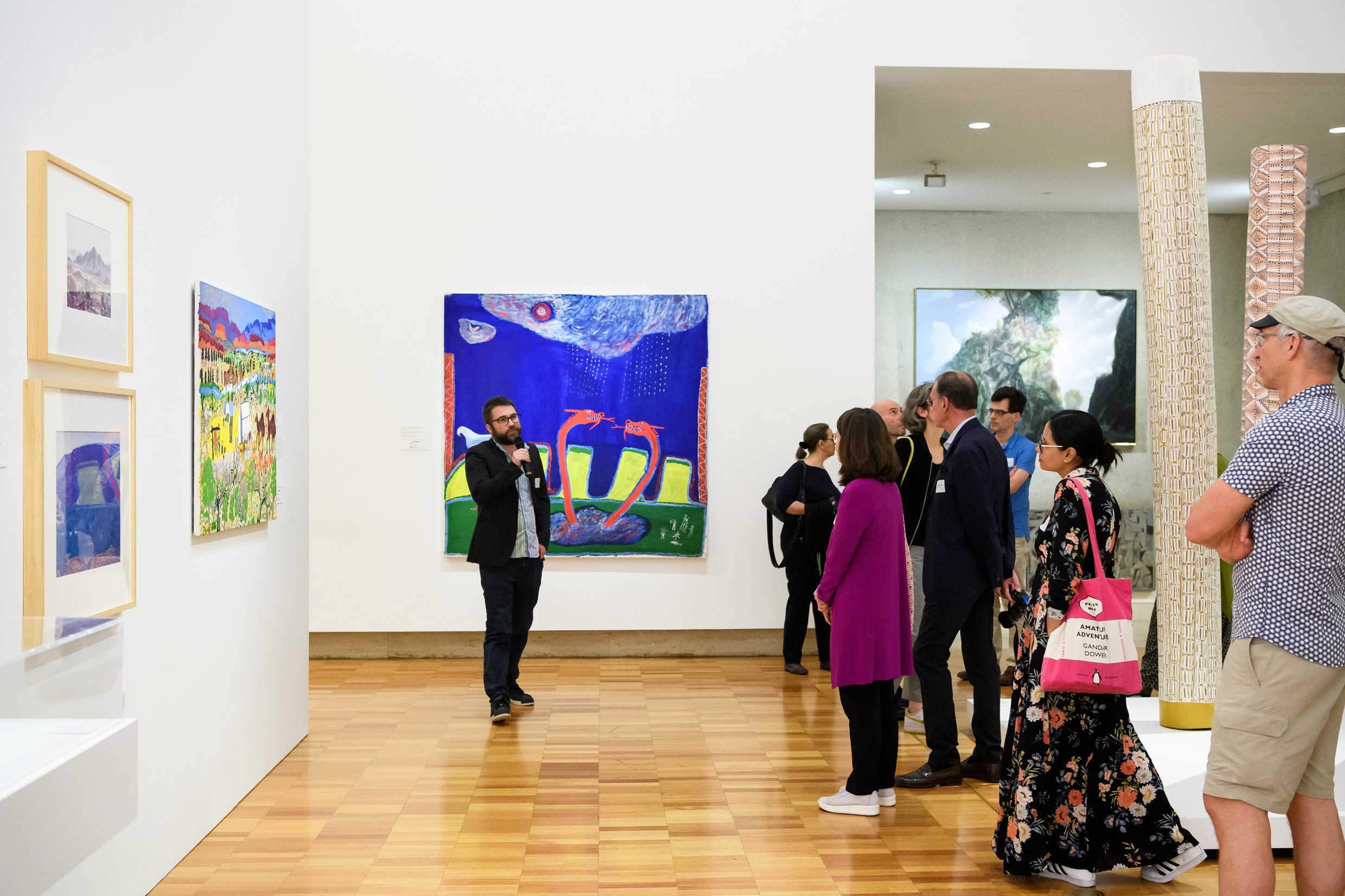CIMAM's Toolkit on Environmental Sustainability in Museum Practice

PR 6 July 2021
CIMAM launches a Toolkit on Environmental Sustainability in Museum Practice with the main resources, tools, guides and international examples to achieve climate neutrality in museums in accordance with the UN’s Sustainable Development Goals (SDGs).
Barcelona, 6 July, 2021 – CIMAM, the International Committee for Museums and Collections of Modern Art, recognizes the climate and ecological emergency and is seriously committed to working for sustainability understood in the broadest terms set out by the UN's Sustainable Development Goals, Agenda 2030.
The CIMAM Board members have jointly provided examples and resources to develop the Toolkit on Environmental Sustainability in Museum Practice and help and encourage modern and contemporary art museum professionals to implement the changes needed to achieve climate neutrality.
“Concern about climate and ecological emergency and interest in addressing it is gaining huge momentum across the sector – internationally – and is being driven by artists, institutions or participants in culture, and what is positive is how the emergency is encouraging a new kind of collaboration and new networks of support are beginning to be visible”, affirms Frances Morris, Director of the Tate Modern, London, member of CIMAM's Board, and chair of CIMAM's Sustainability Working Group, which has led this project.
The CIMAM Toolkit on Environmental Sustainability in Museum Practice is a useful and practical guide with examples of immediate actions currently being implemented in the museums and curatorial projects of CIMAM Board members, addressing important aspects such as exhibition programs, museum staffing, and building efficiency.
Institutions such as the Tate Modern in London, the M+ in Singapore, and the Australian Museum in Sydney, have generously contributed to the Toolkit with sustainability Action Plans. Tate with the first virtual courier principles and guidelines established in 2021, M+ with a three-dimension approach to sustainability, and the Australian Museum plan to become a carbon-neutral museum.
“What is more difficult, but also essential, is to think about the values we espouse and measure ourselves against and whether they are fit for purpose. Climate emergency is not just about global warming. It is one of a number of intersecting emergencies where the entanglement of the planet and people over many centuries is evidenced in global inequalities: social, economic, racial and gendered, as well as ecological disaster. What is our responsibility in the face of these intersecting emergencies, as organizations that purport to reflect and shape public understanding of culture?” reflects Frances Morris on the responsibility of museums for the social, economic and environmental impact of their actions.
To calculate and certify the carbon footprint, the Toolkit on Environmental Sustainability in Museum Practice proposes a series of international mechanisms such as the GCC Galleries Climate Coalition, the Climate Neutrality Certificate, the Certified B Corporation, and the United Nations Climate Neutral Now, as well as a series of international consultants, such as Curating Tomorrow in the United Kingdom, engeco in Singapore and Australia, and ECODES in Spain and Latin America, to advise museums on how to perform more sustainably. Museums and artists can play a key role in raising awareness of climate change by including it in their exhibitions and public programs. CIMAM has selected several organizations that contribute to raising society's understanding of an issue that affects us all.
“Institutions should strive to promote climate and ecological awareness through the works of art in our custody. The climate and ecological emergency is arguably the most important issue of our time. Artists are at the forefront of activism and we, as trusted civic organizations, have a responsibility, both to them and to our audiences, to publicize the emergency situation and, in my opinion, take a stand. The beauty and potential of arts organizations are that art can tell powerful narratives in a multitude of different voices and registers that offer many roots in understanding and engagement, exploring the past but also pointing to the future”, reaffirms Frances Morris.
As an international organization dedicated to promoting best practices in modern and contemporary art museums and raising awareness and responding to the changing needs of the profession, environmental sustainability is one of the leading and most urgent issues that CIMAM wants to address.
Therefore, in its activity, CIMAM also implements measures to reduce its carbon footprint and waste streams. New for 2021, CIMAM's membership card will be entirely digital. Members will be able to accredit themselves at the more than 200 modern and contemporary art museums and biennials worldwide that are part of CIMAM's Free Admission Program via their cell phones with a digital card renewed every three years. With this measure, CIMAM is committed to reducing its carbon footprint.
The Toolkit on Environmental Sustainability in Museum Practices will be a reference document that will be updated periodically with new strategies, ideas, and resources as they emerge in the museum sector to help institutions move towards sustainability and thus achieve climate-neutral impact.